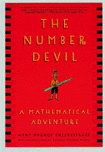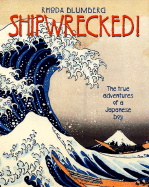| Non-fiction Grades K-3 |
Fiction K-3 (Picture Books) |
| Non-fiction Grades 4-6 plus |
Fiction K-3 (Chapter Books) |
| Youth Non Fiction Grades 7 and up |
Fiction Grades 4-6 |
| Poetry/Novels in Poetry |
Youth Fiction Grades 7 and up |
| Suitable for All Grades |
Young Adult Grades 10 - 12 |
| Books suitable for French Immersion Students |
| Back to Doucette Wiki Main page |


101 Places you Gotta See Before You're 12! by Joanne O'Sullivan (not in the Doucette)
- Great fun for pre-teens to see how many of these they've already seen. And lots of ideas they might never have thought of, since the places include a cemetary, a waterfall, backstage at the theatre, a teachers' lounge, etc. Could provide interesting ideas for almost any subject. (03/07)
A to Zen by Ruth Wells
- An alphabet book with a difference, beginning with the fact that you read it from back to front as Japanese books are constructed, and because the alphabet is used as a framework for an exploration of Japanese culture. Although picture book format, it's better suited to be used along with a study of different cultures, or of Japan itself, in higher grades.
Amazing Animal Adventures from Around the World by Brian Keating
- Learn about animals from the personal stories and photographs of the Head of Conservation Outreach at the Calgary Zoo. (12/05)
Arctic Lights, Arctic Nights by Debbie S. Miller
- A delightful book, recording the changes in Arctic light from one summer solstice to the next in Fairbanks, Alaska - beginning with the 21 hours and 49 minutes of daylight on June 21, then following the light's diminution month-by-month to the winter solstice with its brief daylight, and the gradual swelling back to the summer solstice. The reactions and lives of the wildlife in reaction to these seasonal changes are also portrayed.(12/06)
Art Aginst the Odds: from Slave Quilts to Prison Paintings by Susan Rubin
- How making art can help people who are marginalized cope with their lives. The last two chapters are most appropriate for educators. One shows an inner school teacher reading Animal Farm and having kids illustrate it was he reads. The other is about the art inherent in the toys that kids in third-world countries make from everyday objects. A picture book that shows an African boy making his own toy is Galimoto. There could be also be a tie-in to the book The Material World in which families around the world display all their possessions. What would our kids' toy collections look like compared to kids in other parts of the world? (01/07)
Beyond the Great Mountain: A Visual Poem about China by Ed Young
- Synthesizes information about China in a subtle way, using text and illustrations featuring Chinese characters and paper collage. Provides a platform for a further investigation about China.
Endless Steppe: Growing Up in Siberia by Esther Hautzig
- Originally published in 1968 this is the true story of a young Polish girl whose family is exiled to Siberia by the Stalinist government. Powerful but accessible writing, for strong readers in grades 5/6 or older,on a topic that could generate discussions about acceptance, war, persistence and resilience in a Social Studies classroom. (03/07)
Exploring the Unexplained by Kelly Knauer
- A fascinating look at mysteries of the past, of nature, of space, of the human mind and spirit. May provide ideas for inquiry and well as intriguing reading for 'non-fiction minded' kids. (10/07)
Hana’s Suitcase by Karen Levine
- The true, intertwined stories of a young Japanese woman’s search for the owner of the suitcase donated to her holocaust museum, and of the life of the young girl, Hana Brady, who originally took the suitcase with her to Auschwitz. Powerful and moving.
Imagine by Norman Messenger
- Cleverly constructed gatefolds, wheels, and flaps allow children to create gloriously unexpected animals and humans by matching up bodies and heads, and on each page small, inset visual puzzles offer more interactive fun.
Into the World of the Dead: Astonishing Adventures in the Underworld by Michael Boughn
- Examines through stories, myths, and works of art, how the world's various cultures have dealt with what lies beyond death. (02/07)
The Journey that Saved Curious George by Louise Borden
- The life story of the creators of the 'Curious George' books and especially of the Reys' escape from France during the Second World War. Beautifully put together with photos, copies of original documents and wonderful water-colour illustrations in the style of the Reys' own books. (10/07)
Leonardo’s Horse by Jean Fritz
- Lots of information about Leonardo da Vinci’s achievements but also about his one significant failure: not completing a huge statue of a horse. And then, over four hundred years later, American Charlie Dent finishes the job.
Little by Little: A Writer's Education by Jean Little
- An engrossing and vivid memoir by one of Canada's best children's writers, whose struggles against her visual impairment, and toward self-acceptance and developing her gifts as a writer ring absolutely true. A book that can be equally enjoyed by bright upper-elementary students, especially those interested in writing, by teens and by adults. (03/07)
Moon and I by Betsy Byars
- While describing her humorous adventures with a blacksnake (that she names Moon), popular children's author Betsy Byars recounts childhood anecdotes and explains how she writes a book. (03/07)
Ouch: How Your Body Makes it Through a Very Bad Day
- A fascinating virtual tour through some of the grossest, gooiest events of the body (think erupting pimples) presented in 3D graphics through use of a nanocam. Other processes seen "up close and personal" include asthmatic reactions, sweating, sneezing and sleeping. Very informative and with built-in appeal to middle school students.(02/08)
The Real Thing! Scorpions by Mary Packard
- The topic - and the real scorpion encased in plastic - might entice reluctant readers to learn about the habits and varieties of scorpions. (03/07)
Roman Soldier's Handbook: A Survival Guide for the Raw Recruit by Lesley Sims
- Full of details about what it would be like to have been a soldier in the army of Ancient Rome. A good book for boys. (02/07)
Scoop on Poop by Wayne Lynch (not in the Doucette though have other titles by him)
- A fun and scientific look at .... the title says it all! (12/05)
Shipwrecked: The true adventures of a Japanese boy by Rhoda Blumberg
- An illustrated non-fiction book that reads like a novel, this is the true story of a 14-year-old Japanese boy whose fishing boat was swept away from Japan in a storm in 1841. Although rescued by an American sailing boat, Japanese isolationist policy meant he couldn’t return home until he eventually played a role in opening Japan up to the west. A very accessible way of learning about Japanese history.(11/06)
Sneeze by Alexandra Siy
- Nine kids discover nine different reasons for sneezing--from allergens and dust mites to bright light and viruses. Incredible micrographs magnify the tiny sneeze-inducing irritants, as well as human nerves and neurons, 400 to 222,220 times larger than life. (02/08)
They did What?!: Your Guide to Weird and Wacky Things People Do by Jeff Szpirglas
- A fun look at the fads, fashions and foibles of people through the ages. (02/07)
Three Wishes: Palestinian and Israeli Children Speak by Deborah Ellis
- 20 Israeli and Palestinian children talk about the stark reality of their lives. By the well-regarded authors of The Breadwinner and Parvana’s Journey. Recently there has been considerable controversy about this book as the Canadian Jewish Congress has pushed to have it removed from the prestigious Silver Birch reading list in Ontario and from school libraries, an action that has been opposed by various civil liberties organizations.
Uncommon Traveler: Mary Kingsley in Africa by Don Brown
- After a secluded childhood and having cared for her parents until the age of 30, this nineteenth-century Englishwoman embarked alone on a trip through unexplored West Africa in 1893 and 1894, exploring the country in proper Victorian dress. (10/07)
We Are all Related: A Celebration of our Cultural Heritage by George Cunningham Elementary School, Vancouver
- Artwork created by Vancouver school students representing all the cultural heritages present in the school. (12/05)

